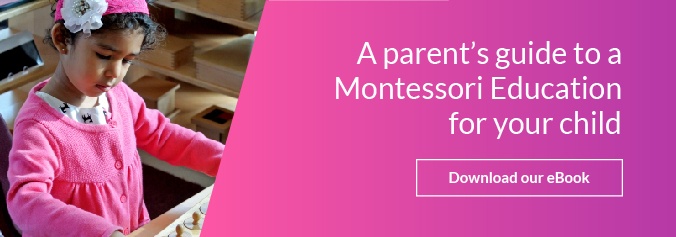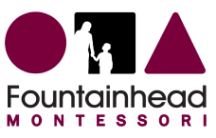In a world overflowing with flashy, electronic toys promising to make children smarter, parents face the challenge of identifying which playthings truly support their child's development. The Montessori approach offers a refreshing perspective, focusing on simple, beautiful materials that engage children's natural curiosity and support their developmental needs. At Fountainhead Montessori School, we often receive questions from parents about selecting toys for home use that complement the Montessori experience. This comprehensive guide will help you choose educational toys that align with Montessori principles for your toddler or preschooler.
Key Characteristics of Montessori Materials
- Based on Reality: Montessori materials reflect the real world rather than fantasy. Young children are naturally working to understand their environment, and realistic toys help them build accurate mental models of how the world works.
- Natural Materials: Whenever possible, Montessori favors natural materials like wood, metal, glass, and fabric over plastic. These materials provide rich sensory feedback, connecting children with the natural world and offering varied sensory experiences.
- Beauty and Quality: Materials are designed to be aesthetically pleasing and made with attention to quality. Beautiful objects naturally attract children's attention and inspire care and respect.
- Simplicity and Purpose: Each material has a clear purpose and isolates one concept or skill at a time. This allows children to focus on mastering specific abilities without confusion or overstimulation.
- Built-in Control of Error: Whenever possible, materials are designed so that the child can recognize and correct their own mistakes without adult intervention, fostering independence and self-assessment.
- Developmental Progression: Materials follow a carefully sequenced progression from simple to complex, concrete to abstract, supporting the child's natural development.
- Limited Quantity: Montessori environments provide a careful selection of materials rather than an overwhelming abundance, helping children develop focus and make meaningful choices.
What About Pretend Play?
A common misconception is that Montessori discourages imagination or pretend play. In reality, Montessori recognizes that young children naturally engage with the world differently at different stages:
- Toddlers and young preschoolers are primarily focused on understanding reality through concrete experiences. Their "pretend play" typically involves imitating real adult activities they observe (cooking, cleaning, caring for babies).
- Older preschoolers and kindergarteners increasingly engage in more abstract imaginative play as they develop a solid foundation in reality.
Montessori supports imagination by first providing rich, real experiences and tools for children to process and represent these experiences in their play.
Montessori-Aligned Toys for Toddlers (12-36 months)
Toddlers are developing independence, refining movements, and building language. Ideal toys support these developmental priorities.
Practical Life Toys
Simple Puzzles with Knobs
- Wooden puzzles with 2-4 pieces featuring animals, vehicles, or household objects
- Benefits: Develops fine motor skills, visual discrimination, and vocabulary
- Look for: Wooden puzzles with realistic images and knobbed pieces for easy grasping
Practical Tools in Child Size
- Small broom and dustpan
- Child-sized watering can
- Small pitchers for pouring practice
- Benefits: Supports independence, coordination, and participation in family life
- Look for: Functional (not pretend) tools that actually work
Dressing Frames and Boards
- Frames or boards with different fasteners (buttons, zippers, snaps)
- Benefits: Develops fine motor skills and self-care abilities
- Look for: Well-constructed frames with clear, isolated fastening challenges
Sensory Development Toys
Stacking and Nesting Toys
- Simple wooden stacking rings or cups
- Nesting boxes or dolls
- Benefits: Develops visual discrimination of size, spatial awareness, and coordination
- Look for: Simple designs with clear size progression
Texture Exploration Materials
- Fabric matching cards or books
- Sensory balls with different textures
- Benefits: Refines tactile discrimination and vocabulary for textures
- Look for: Varied, interesting textures without overwhelming patterns or colors
Sound Cylinders or Shakers
- Matched pairs of containers with different sounds
- Benefits: Develops auditory discrimination and matching skills
- Look for: Containers that isolate the sound variable without visual clues
Language Development Toys
Realistic Animal Figurines
- Small collections of farm animals, woodland creatures, or household pets
- Benefits: Builds vocabulary and classification skills
- Look for: Anatomically correct animals in natural poses
Simple Picture Books
- Books with clear, realistic images and simple text
- Books about everyday activities and objects
- Benefits: Builds vocabulary and connects words with images
- Look for: Sturdy construction and realistic rather than cartoonish illustrations
The toys outlined above are a great place to start if you want to choose the best educational toys for your toddler or preschooler. By choosing toys that are aligned with the Montessori method, you can support the learning that your child in doing in the Montessori classroom at home.











Let us know what you think about this post
Put your Comment Below: